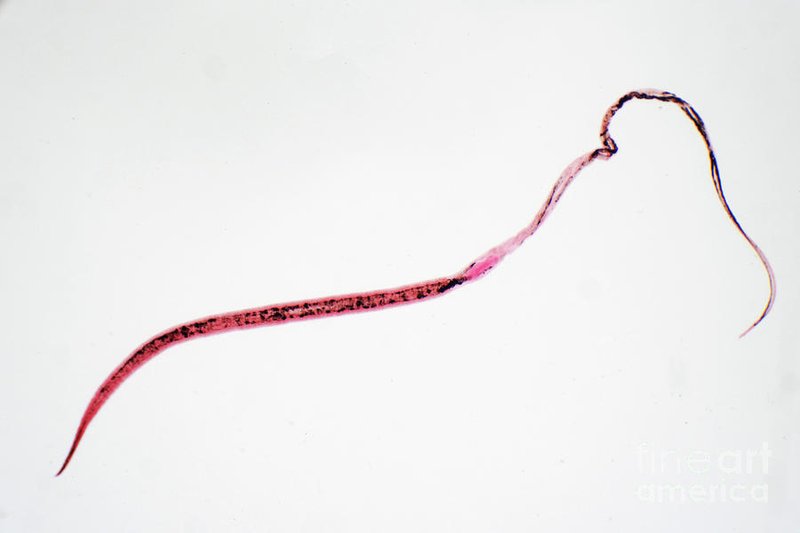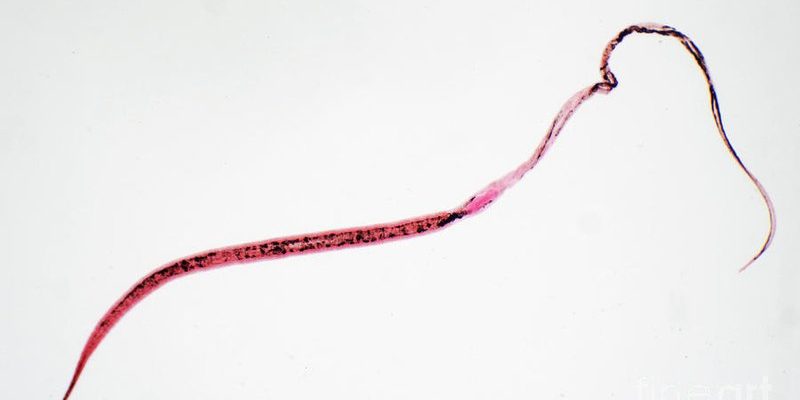
Understanding whipworms can feel like a hidden treasure hunt. They might not be the most glamorous critters, but they have their own unique characteristics that set them apart. While they thrive inside hosts—primarily animals like dogs and pigs—they can also be found in soil, particularly in areas where hosts have left droppings. In this guide, I’ll walk you through various aspects of identifying whipworms when you venture outdoors, making it easier for you to recognize them and understand their role in nature.
What Are Whipworms?
Whipworms, scientifically known as *Trichuris*, are a type of parasitic worm that primarily inhabit the intestines of their hosts, feeding on the tissue and blood of the host. They have a distinctive appearance, with a thin, whip-like end and a thicker body, resembling a tiny piece of spaghetti. You might not notice them directly in the wild, but knowing what to look for can help you identify their presence.
These parasites are not only a concern for their hosts, but they also contribute to the ecosystem. In an ideal environment, whipworms and their hosts exist in a balance. However, an overpopulation of whipworms can lead to health problems for the host, which is why understanding their life cycle is vital.
Where Do Whipworms Live?
Whipworms are typically found in warm, moist environments, making certain regions more favorable than others. Here are a few important points to consider:
- Soil: Whipworm eggs can survive in the soil for extended periods, especially in places where animals commonly defecate. Look for areas with plenty of animal activity.
- Fecal Matter: The presence of animal droppings often indicates whipworm activity. They thrive in nutrient-rich environments created by feces.
- Moisture: Humid, warm conditions are ideal for whipworms. They prefer environments that provide the moisture needed for their eggs to hatch and infect hosts.
So, when you’re out exploring, keep an eye out for these clues! Just remember, while whipworms are fascinating to study, maintaining a safe distance is best.
How to Spot Signs of Whipworms
Identifying whipworms is not always straightforward, but some signs can indicate their presence. Here’s what to look for:
- Animal Behavior: If you notice an animal acting lethargic or showing signs of distress after eating or defecating, it might be a sign of whipworm infection. Behavior changes can signal when something is off.
- Droppings: Inspect fecal matter for unusual shapes, colors, or blood. Whipworms can cause bloody diarrhea in infected animals.
- Location: Pay attention to the habitat. Areas like farms or regions where animals graze are more prone to whipworm infestation.
Even if a whipworm isn’t directly visible, these signs can help you make an educated guess about their presence.
How Do Whipworms Affect Their Hosts?
Whipworms establish their home in the intestines, affecting their hosts in various ways. Understanding this relationship can shed light on why these parasites matter:
- Health Issues: In animals, whipworms can cause symptoms such as weight loss, diarrhea, and anemia. Their feeding can lead to nutritional deficiencies over time.
- Transmission: Whipworms reproduce quickly. Their eggs, once in feces, can contaminate the environment, making it easy for other animals to become infected.
- Impact on Ecosystem: While whipworms can harm individual hosts, they also play a role in nutrient cycling within their ecosystems.
So, while they’re certainly a nuisance, whipworms have a role to play in the larger picture of ecosystem balance.
How to Identify Whipworm Eggs
Identifying whipworm eggs takes a keen eye and some knowledge. They are typically lemon-shaped and measure about 50-60 micrometers long. Here are a few tips to help you recognize them:
- Color and Shape: Whipworm eggs are yellowish-brown and have a distinct, elongated shape. They resemble small lemons, which can help you remember what to look for.
- Location: Check feces or contaminated soil where animals frequently defecate. You might need a microscope to see them clearly, as they’re quite small.
- Sampling: If you’re in a location where whipworms are suspected, collecting a soil sample for examination can yield valuable information.
Identifying these eggs can give you insight into whipworm populations in a given area, but always remember to take proper safety precautions.
Preventing Whipworm Infestation
If you’re a pet owner or a farmer, prevention is essential for managing whipworm infestations. Here’s how you can keep your animals safe:
- Regular Deworming: Consult with a veterinarian to establish a regular deworming schedule for your pets. Routine deworming can help control whipworm populations.
- Sanitation: Keeping the environment clean is crucial. Regularly dispose of animal waste to minimize whipworm eggs in the soil.
- Monitoring: Keep an eye on the health of animals in your care. Early detection of symptoms can make a significant difference.
Managing whipworms may seem daunting, but it’s definitely achievable with consistent efforts.
Identifying whipworms in their natural habitat can be a bit tricky, but with observation and knowledge, you can make sense of it all. Their role in ecosystems and the impact they have on host animals shouldn’t be understated. By knowing where to look and what to watch for, you can better understand these fascinating creatures.
So the next time you’re out in nature, take a moment to consider the tiny life forms that often go unnoticed. Whether you’re on a hike or just enjoying a day outside, you can look for signs of whipworms and appreciate their unique role in the circle of life. Remember, it’s all about the balance in nature!

